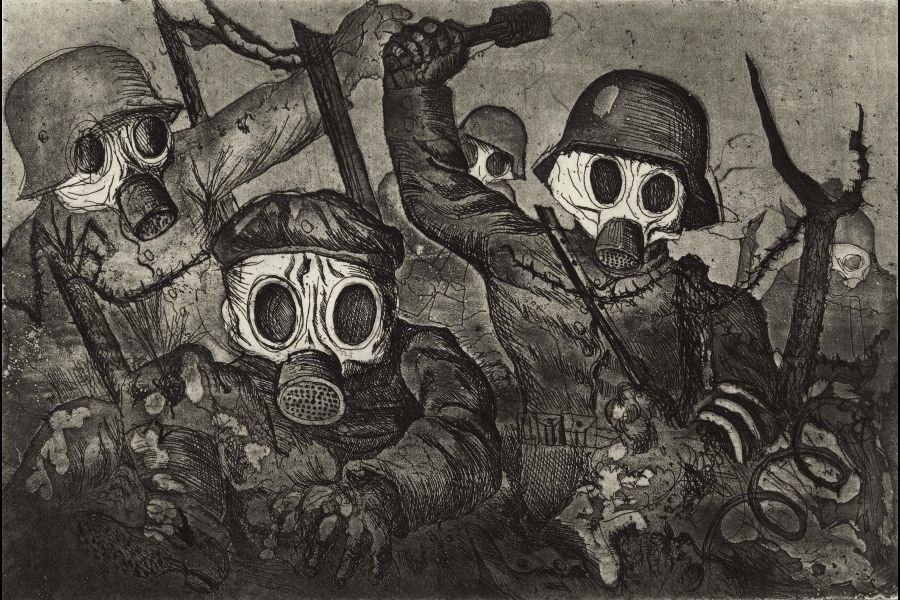Penny-Lynn Cookson
Special to Niagara Now/The Lake Report
“Artists shouldn’t try to improve or convert … they should only bear witness.” – Otto Dix
And what horrors Otto Dix witnessed as a machine gunner in the German army from 1914 to 1918 on the Western and Eastern fronts of the First World War. He had volunteered at the beginning, in the nationalistic surge and with a driving personal desire to “experience everything” with his own eyes.
His was an agnosticism found in his intense study of Nietzche’s philosophy, that held value in a neutral, emphatic affirmation of all phenomena of life. Dix believed that visible reality must be the subject of critical art.
He saw it and drew it, close up in the trenches, in the bodies torn apart, bones, skulls, worms, rats, the madness, the devastation of lives and landscape and his own reflection of what it feels like to drive a bayonet into someone. He was wounded several times, won the Iron Cross, survived major battles, including the 1916 Battle of the Somme where three million fought and one million were killed or wounded in 17 days.
In 1924, he completed “Der Krieg,” a virtuosic cycle of 50 etchings, aquatints and drypoints, revealing the everyday lives of soldiers on the front. It is no glorification of war.
In old age, Dix said, “The war is something animalistic: hunger, lice, mud, those insane odours. Everything is completely different …standing in front of earlier paintings, I had the feeling that one side of reality was not being depicted at all: the ugly. War was a terrible thing but nevertheless something powerful. I definitely could not neglect that! You have to have seen people in this untamed state to know anything about them.”
And when the killing was over, Dix returned home to Gera, and back to Dresden to the Academy of Art to continue his studies, become a professor, and a founder of the Dresden Secession Group promoting Truth, Fraternity, Art and a movement, Neue Sachlichkeit (New Objectivity), to portray things completely clear, naked, the “Object was Primary” in this new brand of realism.
Dix was in great demand in the 1920s and '30s as a portraitist and renowned for his no holds barred portrayals of life in Berlin during the Weimar Republic. There were disturbing canvases of the war-damaged veterans, the cripples and amputees, the fat cat exploiters, the prostitutes, sexual violence and murders, which assaulted and shocked the viewer but were also a poignant provocation demanding reappraisal of a dark society acutely damaged both physically and morally.
In 1933, the Nazis came to power. Dix was dismissed from teaching, his paintings were included in the “Degenerate Exhibition” of 1937 in Munich and 260 of his works confiscated as being “in violation of the moral sensibilities and in subversion of the militant spirit of the German people.”
Nonetheless, near the end of the Second World War, he was conscripted into the Volkssturm, the people's militia. He fought again, was captured by the French and released from a PoW camp in February 1946. Dix didn’t reflect much on the causes of war, but was prescient as a young soldier in the First World War, writing in his notebook: “Once people fought wars for the sake of religion; today it is for the sake of business and industry – a step backward.”
Penny-Lynn Cookson is an art historian who taught at the University of Toronto for 10 years. She was also head of extension services at the Art Gallery of Toronto. Her current lecture series, “The Germans – Art, Faith, War” is on Zoom until Oct. 28 at the RiverBrink Art Museum in Queenston.










